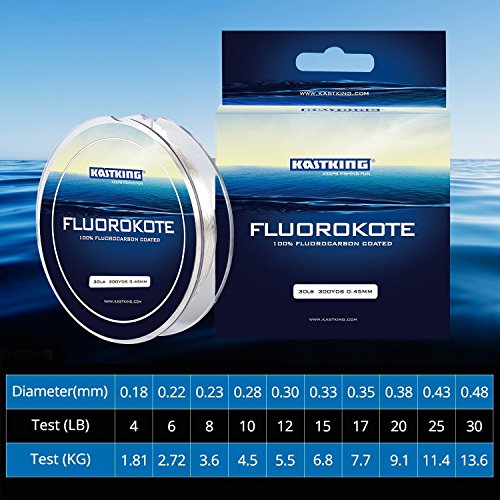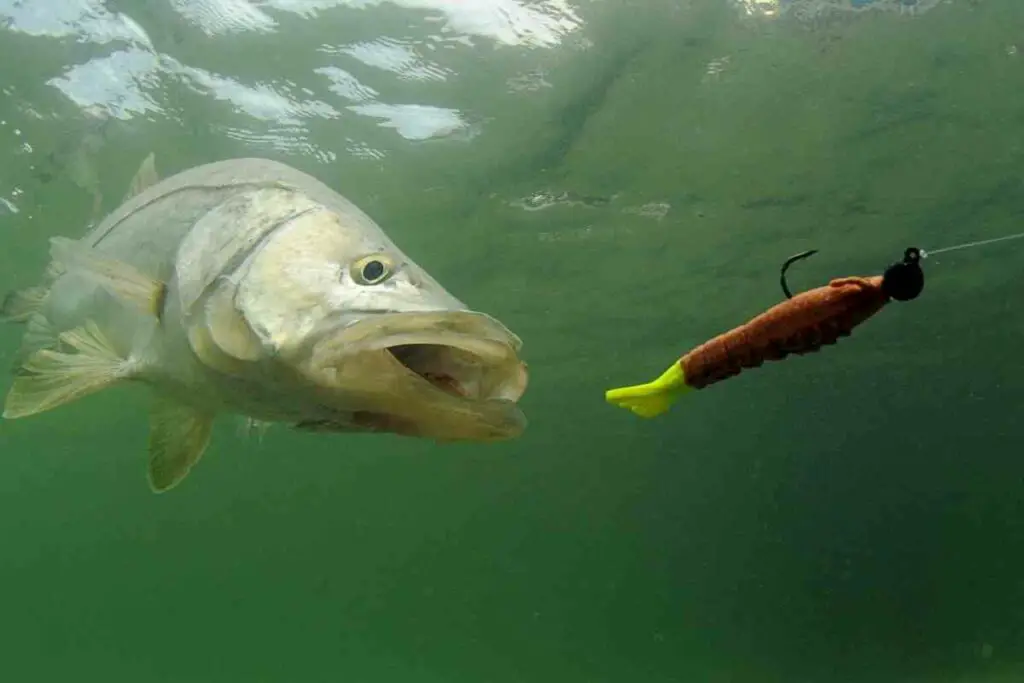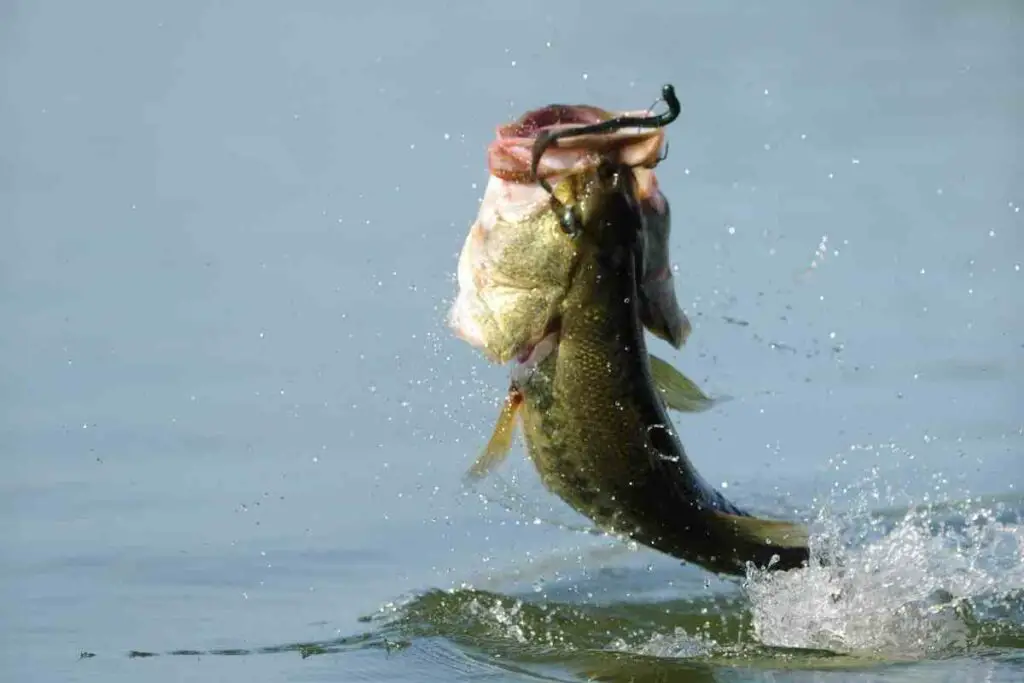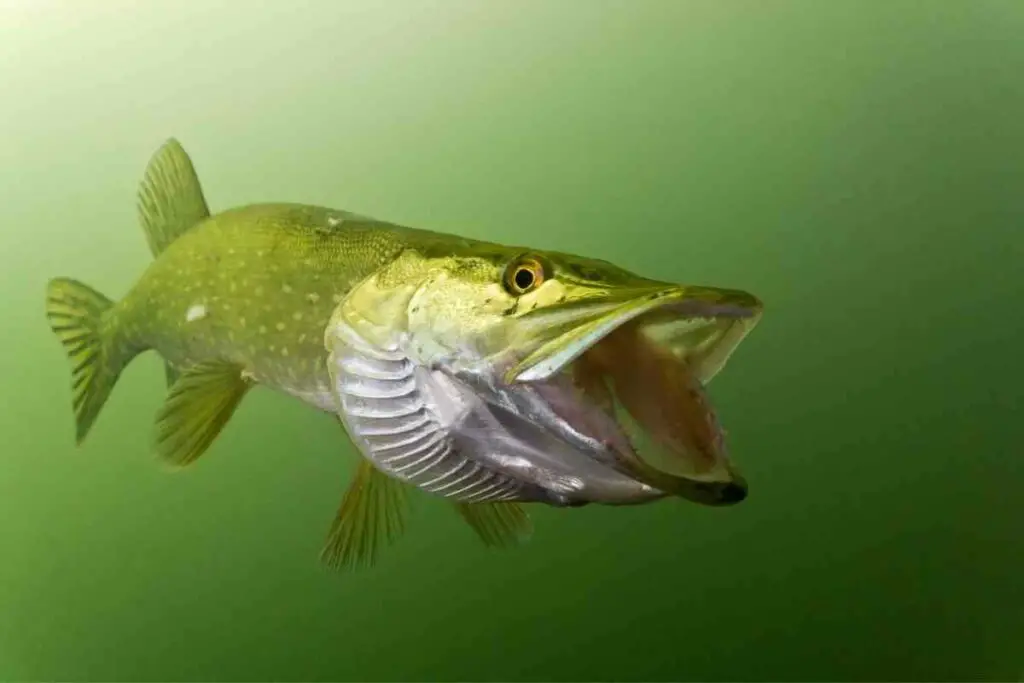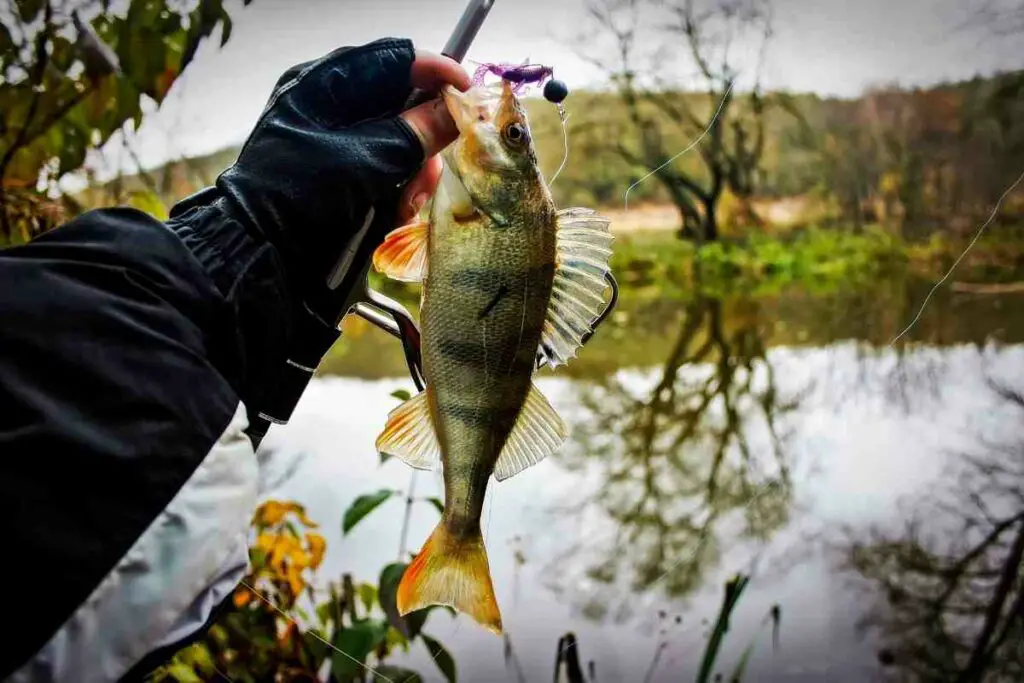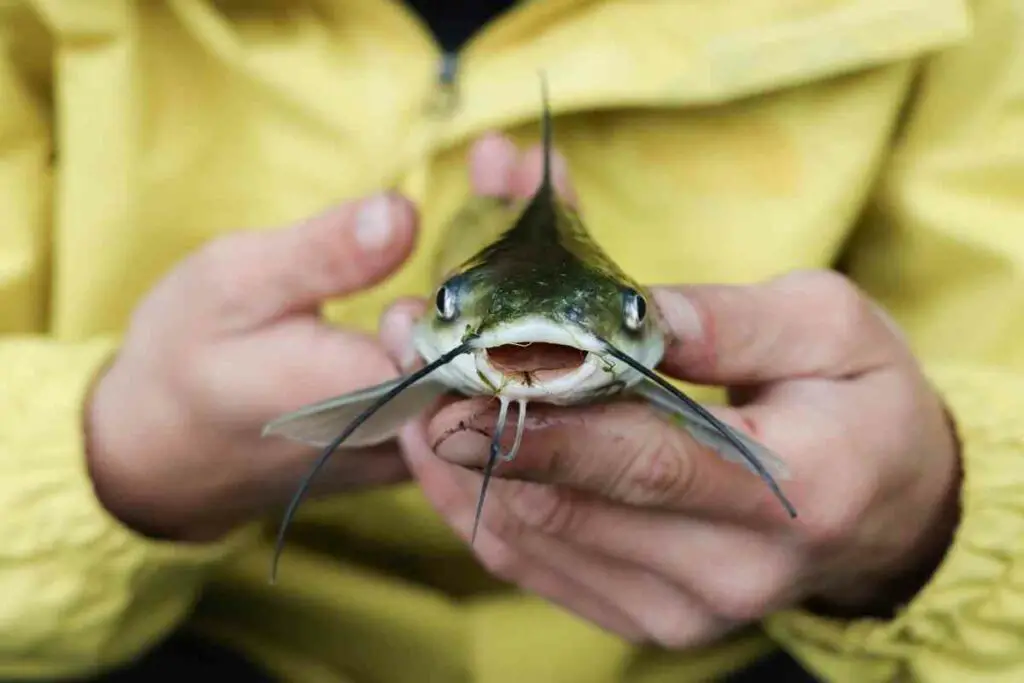
It can be a challenge to find the right fishing line for catching catfish and if you want to catch a lot of them, you’ll need a high-quality line.
Even if the catfish are plentiful where you’re fishing, you won’t be able to catch them if your line should break!
The right fishing line is essential for good catfish fishing. You’ll find lots of views regarding what pound line is best for catfish fishing.
Some people swear by monofilament while others opt for braid.
In This Article – We’ll break it all down and give you some answers to the question what pound line is best for catfish fishing?
Table of Contents
Considerations When Deciding the Best Pound Line for Catfish Fishing
There are a number of things to consider when it comes to choosing your catfish fishing line.
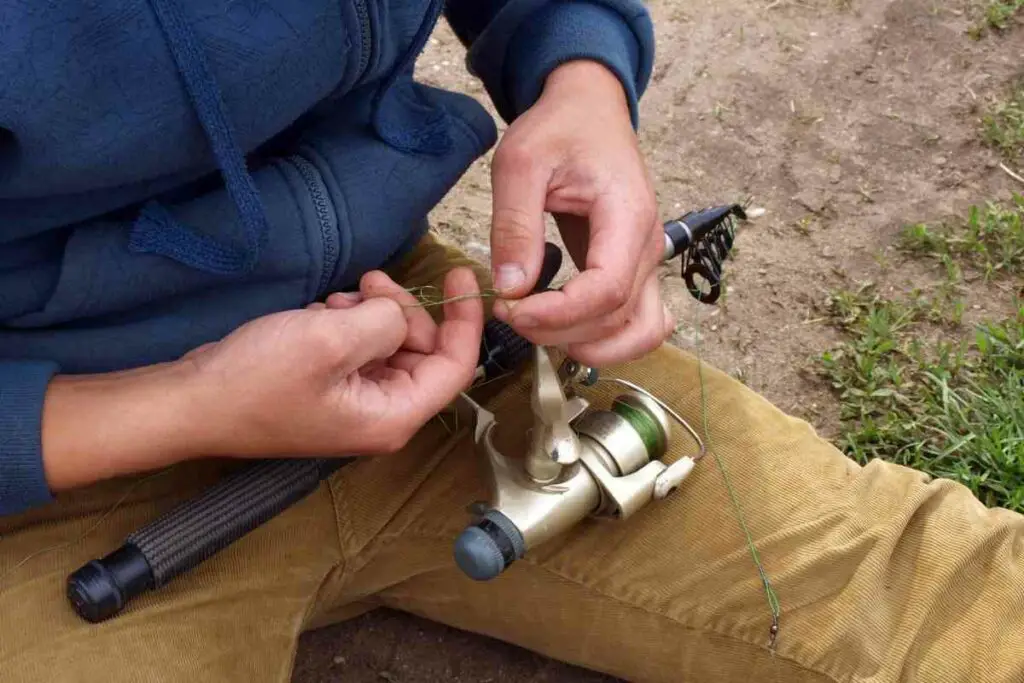
Strength is obviously important, but it’s not the only thing you need to consider.
Let’s take a look at what you need to think about.
Catfish Fishing Line Strength
When you’re looking at catching catfish, you need a strong line.
A fishing line that has a breaking strain of between twenty to thirty pounds is perfect. With this strength, you’ll have a great balance of bulk and strength.
Since a spool is only capable of fitting so many fishing lines, we can’t use really thick ones.
Catfish Fishing Line Color
Why is line color important you might ask?
Well, it’s not – at least not for the catfish – but, when you’re fishing for these fish, you’re likely to use lots of different lines at once and be in low-light conditions.
This means that you need a brightly colored line to assist you. Lines that are bright orange, yellow, or green will help you keep the lines straight and know what’s happening in the water.
Since the majority of catfish hang about in dark or muddy water, a brightly colored line won’t trouble them.
The only reason we suggest bright lines is to make your task a lot easier!
Line Visibility
Line visibility isn’t as important when you’re fishing for catfish as it is for other fish species.
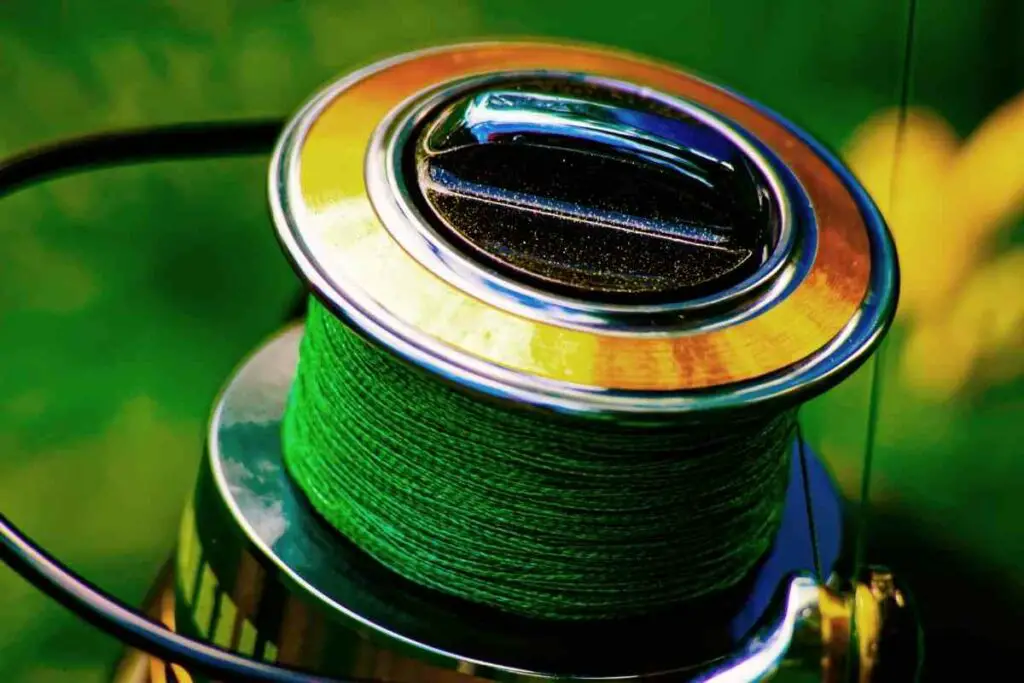
This is because catfish are very attracted to strong smells. If you’re a seasoned catfish angler, you’ll know just how smelly some catfish bait is!
If you’re worried about catfish fleeing because they see a line, use a monofilament or fluorocarbon line.
Line Durability for Catfish Fishing
Often anglers overlook the durability of a fishing line but when it comes to fishing for catfish, you need to invest in a line that is resistant to abrasion as catfish are pretty heavy!
Smooth Casting
When choosing a line for catfish, there are advantages to using a braided line.
This is because when braided, the line is resistant to both coiling and stretching.
With a braided line, your throw will be more precise and require less effort. Irritating line problems all but disappear with a braided line.
Line Memory
When we talk of line memory, we’re referring to its ability to revert back to its original form if it gets bent.
This is important because the line will have contact with the rod and the reel when you reel and cast.
Catfish Fishing Line Weighting
Considering the line weighting for catfish is essential for fixing your hooks in place.
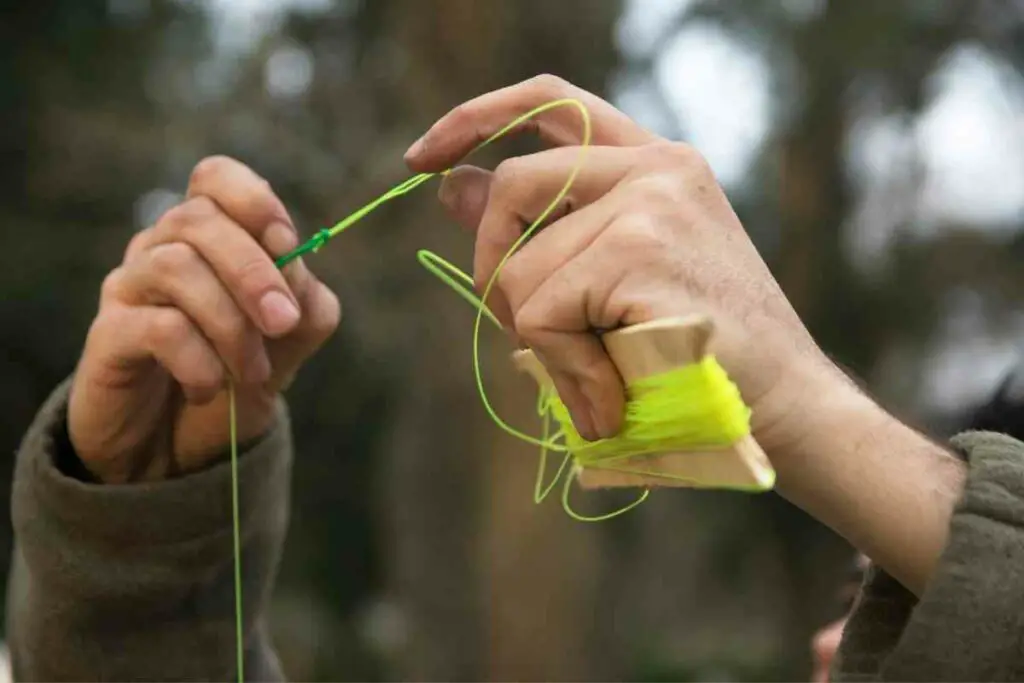
If you’re fishing for bass, for example, you’ll want a thicker line since you’ll need more force.
Catfish Line Stretch
Line strength and line stretch don’t mean the same thing.
When your line is less stretchy, you’ll have better bite detection.
Catfish Fishing Line Coating
When you’re fishing for catfish, a monofilament-coated line is ideal.
This allows you to keep the fish in close contact when you reel them in. It also protects hooks.
Catfish Line Diameter
A line’s diameter has an effect on its flexibility. Thinner lines are more sensitive.
Choosing the Best Pound Line for Catfish Fishing
As well as the considerations above, you also need to think about your fishing line strength depending on your location.
If you’re fishing in U.S. waterways, you might only need a twelve to seventeen-pound line but for areas like Red River where there are large catfish weighing as much as thirty pounds each, you’ll need a stronger line.
If the fish are 20 lbs, go for a 30-pound line. Flathead or large blue catfish need a line between fifty and eighty pounds.
Catfish Monofilament Line
This type of line is widely available in fishing stores and is robust, abrasion-resistant, and generally inexpensive.
When underwater, it’s really visible. It can also tolerate guides as it will break quickly if tangles occur.
If you’re catching small or medium-sized catfish, a 20-pound line is fine.
This monofilament line will catch catfish that weigh between two and twelve pounds without any problems. It’s also cheaper.
There are, however, certain restrictions with a monofilament line.
These are thicker than braided lines so if you want more troll or drift, a monofilament will increase drag.
It’s also not great for people who want a great performance when casting as its capacity is limited in this respect.
Finally: Monofilament line does tend to stretch, which means it’s not ideal as it will weaken over time and be more likely to break. It’s best to choose a line with good line memory.
Catfish Braided Line
The advantages of a braided line are that it is not elastic.
This means that when you pull the rod back, the hook is set straight away. Braided line has a smaller diameter too, which means that it can troll or drift much more easily.
Since it has no stretch, it’s memory-less.
There are disadvantages to braided lines too, though.
They have a smaller diameter, which means that lots of anglers buy a heavier line because they assume this is better.
However, this could damage the eyelets on your rod and also makes breaking your line a pain when you get a snag.
What’s More: You’ll pay triple or quadruple the price for a braided line compared to a filament line – and they also aren’t great with sharp rocks either!
Catfish Fluorocarbon Line
Fluorocarbon catfish line is often seen as a catfishing leader.
Though these are the most resistant to abrasion and are the strongest of lines out there, they’re rarely used for catching catfish.
However, this type of line can be great as it is good value for money, is easy to use and work with, has some stretch, and isn’t very visible in the water.
One downside to using fluorocarbon fishing lines is that tying knots is more difficult due to their strength.
Conclusion
Overall, there are lots of things you need to consider when choosing the best pound line for catfish.
If you’re going to be catching fish weighing up to 20 pounds, you’ll need a line that’s around 30 pounds.
Anything bigger than that, you’ll need to up the line’s strength to 50 or 80 pounds for example.
Finally, a braided line seems to be the best choice when it comes to line type, but this is much more expensive.
Whichever type of line you choose, the most important thing is to get the strength spot on so that you can enjoy fishing and catch catfish without your line breaking!
Read Next
- What Pound Line is Best for Catfish Fishing?
- Complete Guide to Baits and Lures for Snook Fishing
- Best Time to Fish for Bass in a Pond – Plus Reasons Why!
- Beginners Guide for Catching Bluegill in Summer and Winter
- Muskie vs Pike: The Main Differences Between These Fish
- How To Set Up for Fishing Perch


